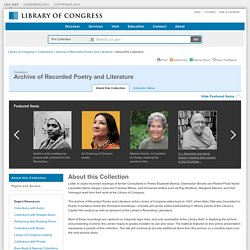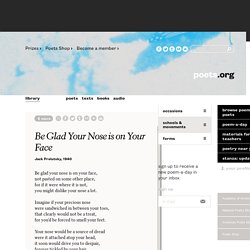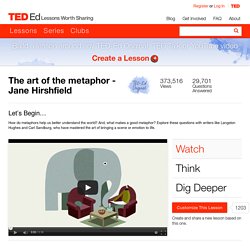

Pretty Prints: 60 Cutest Inspirational Quotes. Whether you’re feeling down, stressed, or just need a kick of inspiration, we’ve got you covered.

Take a look at these 60 inspirational quotes that are guaranteed to encourage you and brighten your day. Find your favorite mantra and repeat it to yourself when you need a boost of confidence to get you through the day! Hopefully they’ll make you smile and give thanks, no matter what circumstances you’re facing! Poesi och cirkelmodellen – en lysande kombination. Jag ser engagerade elever som sitter och småpratar vid borden Jag hör ett kreativt sorl i klassrummet och pennor som rispar mot papper Jag känner koncentrationen och arbetsron Det är så här det ska vara i en skola.

Jag har alltid tyckt att det är lite klurigt att jobba med poesi med eleverna. När det kommer till skrivande av olika dikter brukar klassrumet vara fullt av suckar och pustar. Vånda över att man tror att det ska vara på ett visst sätt och det sättet kan man inte. Att jag själv tycker att det är klurigt är nog för att långt inne finns samma vånda gömd. Vi bär mycket med oss i in i vårt uppdrag. Men de senaste åren har det blivit bättre och gått bättre. Den här gången kombinerade jag mina tidigare efrarenheter och cirkelmodellen. Hur har vi då jobbat? Fas 1- bygga upp kunskap. Best Teen Poems - Poems about Teens.
How to Work with Poetry (easy) - Engelsk - NDLA. How to write a sensory poem. Where I’m from. Classroom-Friendly Poems. John Agard: 'Listen Mr Oxford don' Poetry work & poetry slam on Pinterest. Edgar Allan Poe Museum : Poe's life, legacy, and Works : Richmond, Virginia. Archive of Recorded Poetry and Literature. Listen to audio-recorded readings of former Consultants in Poetry Elizabeth Bishop, Gwendolyn Brooks and Robert Frost; Nobel Laureates Mario Vargas Llosa and Czeslaw Milosz, and renowned writers such as Ray Bradbury, Margaret Atwood, and Kurt Vonnegut read from their work at the Library of Congress.

The Archive of Recorded Poetry and Literature at the Library of Congress dates back to 1943, when Allen Tate was Consultant in Poetry. It contains nearly two thousand recordings—of poets and prose writers participating in literary events at the Library’s Capitol Hill campus as well as sessions at the Library’s Recording Laboratory. Most of these recordings are captured on magnetic tape reels, and only accessible at the Library itself. In digitizing the archive and presenting it online, the Library hopes to greatly broaden its use and value. The material featured on this online presentation represents a sample of this collection. 124 Recordings of Famous Poets Reading Some of Their Poems. Favorite Poem Project - from Song of Myself (50 & 52) 50 There is that in me . . . .

I do not know what it is . . . . but I know it is in me. Want to speak better than 90% of native English speakers? Then learn to pronounce every word here! I am always here for you. Great Poems to Teach. Be Glad Your Nose is on Your Face. On September 8, 1940, Jack Prelutsky was born in Brooklyn, and attended Hunter College in New York City.

Although he claims to have hated poetry through most of his childhood, he rediscovered poetry later in life, and has devoted many years since to writing fresh, humorous poetry aimed specifically at kids. “I realized poetry was a means of communication, that it could be as exciting or as boring as that person or that experience.” In 2006, Prelutsky was named the first Children’s Poet Laureate by the Poetry Foundation.
He lives in Seattle, Washington, and spends much of his time presenting poems to children in schools and libraries throughout the United States. 24 Best Poems to Teach in Middle and High School. It can be hard to know which poems will spur your middle and high schoolers into deep, meaningful discussion and which will leave them, ahem, yawning.

So we asked experienced teachers to share their favorites—the punch-in-the-gut poems that always get a reaction, even from teens. Here's what they had to say. 1. Snow by David Berman Captures a narrative in miniature with a creative structure. 2. The art of the metaphor - Jane Hirshfield. To explore metaphors more fully on your own, there are three directions you can go.

The first is simply to start noticing whenever you meet one. Jane Hirshfield slipped metaphors into many of the things she said in this lesson. You might listen to it again and make a list of some of the metaphors she used along the way, without pointing out that they were metaphors. Then go to any random web blog or newspaper or magazine article and just start reading until you’ve found a half dozen metaphors. Sometimes there will be many right away, other times there could be none at all.
A second direction to explore metaphors further is to practice inventing metaphors yourself. A third way to learn more about metaphor is to read about it directly. A few specific resources: Almost every modern textbook or handbook about poetry has a chapter on metaphor. BBC Radio ran a terrific 45 minute program on metaphor (with a good “recommended books” list on the program’s web page).